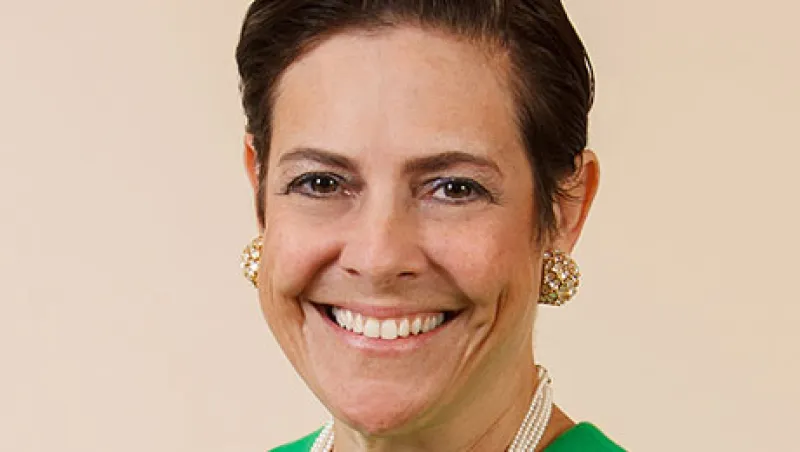According to a 2013 research report by Jersey City, New Jersey–based securities services provider Pershing, a subsidiary of BNY Mellon, only 30 percent of registered investment advisers (RIAs) in the U.S. are women, who have an even smaller representation among senior management at the large firms. The situation is hardly unique to finance of course, with female CEOs accounting for fewer than 5 percent of corporate chiefs in the Fortune 1000 and fewer than 17 percent of directors.
Pershing also cites statistics from the U.S. Department of Labor showing that female advisers tend to work at smaller firms, in smaller teams and, compared with their male peers, earn an average of 58 cents for every dollar earned. Pershing goes on to note surveys indicating that the customer base of professional women and female-headed households tends to be more inquisitive and critical in selecting and retaining advisers.
Statistical surveys confirm that women are more likely than men to seek out the services of a financial adviser and more likely to prefer a female adviser. There is massive opportunity for female advisers, as evidenced by statistics from the 2013 State of Women-Owned Businesses Report, commissioned by American Express OPEN, which estimates that more than $1.3 trillion in sales is generated by businesses owned by women.
Why have large firms failed to attract more female advisers?
When discussing causes for this dearth of female advisers, industry analysts offer reasons from lack of sufficient family leave and flextime to ineffective recruiting practices that amount to little more than lip service within male-centric cultures.
“I don’t think it’s that they are just paying lip service to it; I think it’s that they genuinely don’t know how to do it,” says Alexandra Lebenthal, the president and CEO of municipal bond franchise Lebenthal & Co., about recruiting women to wealth management. “I think that comes from not having enough women at the top ranks in the major wealth management firms. [Former president of global wealth and investment management at Bank of America] Sallie [Krawcheck] was sort of the only one, and obviously now she is gone.”
In 2007 Lebenthal relaunched the firm her grandparents founded in 1925 after buying the name back from Merrill Lynch. Initially focusing on building up the firm’s capital markets franchise with a strong presence in bond and equity underwriting, she has expanded the focus into wealth management and services for family offices. Lebenthal believes women are more likely to join an industry if there are female role models and if a woman reaches out to them. “Many firms are simply throwing their hands up and saying, ‘Yes, we want to hire more women professionals, but we don’t know how to get them.’”
For companies like Lebenthal, the larger firms’ failure to adapt provides a recruitment opportunity. “We are initially focused on female advisers who are already in the business, who are at firms that leave them feeling that they are second-class citizens and where they are one of only a handful of women professionals in a gigantic branch office.”
Lebenthal is not alone in focusing on recruiting more women to join their advisory practices. Private Ocean, a San Rafael, California–based wealth management firm that oversees nearly $900 million in client assets, has recently stepped up its recruitment of women. According to firm COO and partner Susan Dickson, this also helps with marketing to the growing number of households that have a woman as the primary income earner. “Women of prior generations still preferred male advisers,” she says. “Younger professional women today are much more likely to respond positively to working with a female adviser.”
Unlike leaders of other firms, Dickson and her colleagues have focused not only on advisers with existing practices but also on those interested in transitioning from careers in corporate or other professional roles. Dickson has firsthand knowledge of such a career trajectory. She entered the registered investment advisory field in 2005 after decades spent as an executive in the aeronautics and consumer discretionary industries. “We are still very light on strong women advisers in the industry.” Finding top female talent in other sectors “is a great way to find talented recruits,” she says.
The industry generally agrees that female advisers will have competitive advantages in the coming decades as the demographics of U.S. wealth shift. Pershing, in particular, has been active in bolstering the number of female RIAs. The firm has published several white papers and hosted seminars intended to encourage RIA clients to refine recruitment strategies.
“Today more women than men are graduating from college. That is going to profoundly change the industry,“ says Mark Tibergien, CEO of Pershing Advisor Solutions, a Pershing affiliate. Tibergien sees it as an opportunity both for firms and new financial advisers. “This is an opportunity for [new hires] to be intellectually stimulated, have a high degree of independence, profoundly impact the lives of their clients and put a whole new face on the way the business is managed.” On a personal note, Tibergien says he will encourage his nieces to consider careers as RIAs when they graduate from college.






